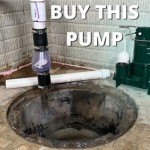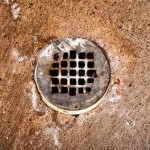How Does A Basement Sewage Pump Work?
A basement sewage pump, also known as a sewage ejector pump, is a crucial component of plumbing systems in homes where fixtures like toilets, showers, or laundry units are located below the level of the main sewer line or septic tank. Without gravity to assist in wastewater removal, these fixtures require a pump to elevate the sewage to a point where it can flow into the municipal sewer system or septic tank by gravity. Understanding the mechanics and functionality of a sewage pump is essential for homeowners to ensure proper maintenance and prevent potentially messy and hazardous backups.
The fundamental purpose of a basement sewage pump is to collect and discharge wastewater and solid waste from basement fixtures. This pump is connected to a holding tank, often referred to as a sewage basin or lift station, which receives the wastewater from the basement plumbing. When the wastewater level in the tank reaches a predetermined point, a float switch activates the pump. The pump then grinds up solids and propels the sewage upward through a discharge pipe, connecting to the main sewer line or septic tank system. This process ensures that wastewater from below-grade fixtures can be effectively removed from the home.
A typical sewage pump system consists of several key components working in concert. These include the sewage basin, the pump itself, a float switch, a check valve, and the discharge piping. Each component plays a critical role in the efficient and reliable operation of the system. Understanding these parts and their functions will help homeowners troubleshoot minor issues and recognize when professional assistance is required.
Key Components of a Sewage Pump System
The effectiveness of a sewage pump system depends on the proper functioning of its individual parts. These include the sewage basin, the pump itself, float switches that control the pump's operation, check valves to prevent backflow, and the discharge piping that carriers sewage away from the basin.
The Sewage Basin: The sewage basin serves as the collection point for all wastewater and solid waste generated by basement fixtures. These basins are typically made of durable plastic or fiberglass and come in various sizes depending on the anticipated volume of waste. It is designed to be watertight to prevent leakage and odors. The basin's size should also accommodate the pump's dimensions and allow for sufficient wastewater storage between pump cycles. The inlet pipes from the basement fixtures and the discharge pipe leading to the main sewer line or septic system are connected to the basin.
The Sewage Pump: The sewage pump is the heart of the system, responsible for grinding up solids and forcefully propelling the wastewater upward. These pumps are specifically designed to handle both liquid and solid waste, typically incorporating a grinding mechanism or impeller to reduce the size of solid materials. The pump's horsepower rating determines its pumping capacity and its ability to handle varying volumes of wastewater. Submersible pumps, designed to operate while submerged in water, are commonly used in sewage ejector systems due to their efficiency and cooling capabilities. The pump is typically located at the bottom of the sewage basin.
The Float Switch: The float switch is a crucial component that controls the pump's operation. It is a mechanism that rises and falls with the water level in the sewage basin. When the wastewater level reaches a certain threshold, the float switch activates the pump. As the pump reduces the water level, the float switch deactivates the pump when the level drops to a predetermined point. Most systems utilize two float switches: one to activate the pump (the "on" float) and another as a high-level alarm in case the primary float fails (the "high-level" float). Some advanced systems may also have a third float switch, the “off” float, for more precise pump cycle control.
The Check Valve: The check valve is installed in the discharge pipe to prevent wastewater from flowing back into the sewage basin after the pump has shut off. Backflow can occur due to gravity pulling the water back down the discharge pipe. The check valve is a one-way valve that allows water to flow only in the upward direction, preventing reverse flow and ensuring that the sewage is efficiently discharged to the main sewer line or septic tank. This prevents the pump from having to re-pump the same water and reduces wear and tear on the system.
The Discharge Piping: The discharge piping connects the sewage pump to the main sewer line or septic system. This piping is typically made of PVC or ABS plastic and must be of sufficient diameter to handle the pump's output. Proper installation and sealing of the discharge piping are crucial to prevent leaks and maintain the integrity of the system. It is important to ensure that the discharge pipe slopes upward and away from the sewage basin to facilitate efficient wastewater flow. Local plumbing codes dictate specific requirements for discharge piping materials and installation practices.
Operational Cycle of a Sewage Pump
Understanding the operational cycle of a sewage pump provides valuable insight into how the system functions as a whole. The cycle consists of the wastewater collection phase, the pump activation phase, the discharge phase, and the pump deactivation phase.
Wastewater Collection: During the wastewater collection phase, wastewater from basement fixtures, such as toilets, showers, and laundry units, flows into the sewage basin via the inlet pipes. As water enters the basin, the overall wastewater level gradually rises. Solids, such as toilet paper and other debris, also accumulate within the basin.
Pump Activation: As the wastewater level rises, it eventually reaches the predetermined activation point for the float switch. The movement of the float switch triggers the pump to start. The float switch sends an electrical signal to the pump motor, initiating the pumping process. In systems with multiple float switches, the second "high-level" float acts as a backup, activating an alarm if the primary float fails and the water level continues to rise.
Discharge: Once activated, the sewage pump begins to grind up solids and forcefully pump the wastewater upward through the discharge pipe. The check valve within the discharge pipe prevents backflow, ensuring that the wastewater is efficiently propelled towards the main sewer line or septic tank. The pump continues to operate until the wastewater level drops to the deactivation point. The rate of discharge depends on the pump's horsepower and the diameter of the discharge pipe.
Pump Deactivation: As the wastewater level decreases, the float switch eventually returns to its original position, breaking the electrical connection and deactivating the pump. The pump shuts off, and the wastewater collection phase begins again. The operational cycle repeats itself each time the wastewater level in the sewage basin reaches the activation point for the float switch. Maintaining a consistent and efficient cycle is crucial for preventing overflows and ensuring the reliable operation of the system.
Troubleshooting and Maintenance
Regular maintenance and prompt troubleshooting are essential for ensuring the longevity and reliability of a sewage pump system. Neglecting maintenance can lead to costly repairs and potentially hazardous backups. Being able to recognize and address common issues can save homeowners significant time and money. Routine inspections, cleaning, and component replacement can contribute to the system's overall performance.
Common Problems: Some common problems associated with sewage pump systems include pump failure, float switch malfunctions, check valve problems, and clogs in the discharge pipe. Pump failure can be caused by overheating, motor burnout, or physical damage. Float switch malfunctions can prevent the pump from activating or deactivating properly. Check valve problems can result in backflow and reduced pumping efficiency. Clogs in the discharge pipe can restrict wastewater flow and lead to overflows.
Basic Troubleshooting: For basic troubleshooting, homeowners can first check the power supply to ensure that the pump is receiving electricity. The circuit breaker that controls the pump should be checked for tripped breakers. Next, inspect the float switch to ensure that it is moving freely and not obstructed. If the pump is running continuously, the float switch may be stuck in the "on" position. If there is a foul odor emanating from the basin, it might indicate a clog in the discharge pipe or a problem with the check valve. If the pump is making unusual noises, it may indicate a problem with the motor or impeller.
Preventative Maintenance: Preventative maintenance should involve periodic inspections of the sewage basin, pump, float switch, check valve, and discharge piping. The sewage basin should be cleaned regularly to remove accumulated debris and prevent clogs. The pump should be inspected for signs of wear or damage. The float switch should be tested to ensure that it is functioning properly. The check valve should be inspected for leaks or corrosion. The discharge piping should be inspected for cracks or obstructions. It is advisable to have a professional plumber inspect the system annually to identify and address any potential problems before they escalate.
Safety Precautions: When working with sewage pump systems, it is crucial to follow proper safety precautions. Always disconnect the power supply to the pump before performing any maintenance or repairs. Wear appropriate personal protective equipment, such as gloves and eye protection, to avoid contact with sewage. Avoid inhaling sewage fumes, as they can be harmful to your health. If you are not comfortable performing the necessary repairs or maintenance, it is best to consult a qualified plumber.

What Is A Sump Pump Discharge Pipe And How Does It Work The Basement Co

What Is A Sump Pump How It Works Water Guard Plumbing

Sewage Ejector Pumps Explained Strongman

What To Do When Sump Pump Failure Leads Basement Flooding

Why You Have A Mini Septic Tank In Your Basement Gold Key Home Inspections

The Difference Between Sump Pits And Lift Stations Cape Coral Fort Myers Plumbing Air Conditioning Service Avis

What Is A Sump Pump How To Install

Do I Need A Sump Pump Updated 2024

Sewage Ejector Pump Maintenance Bieg Plumbing

Sump Pump Installation Repairs Cost Battery Backup In Toronto







